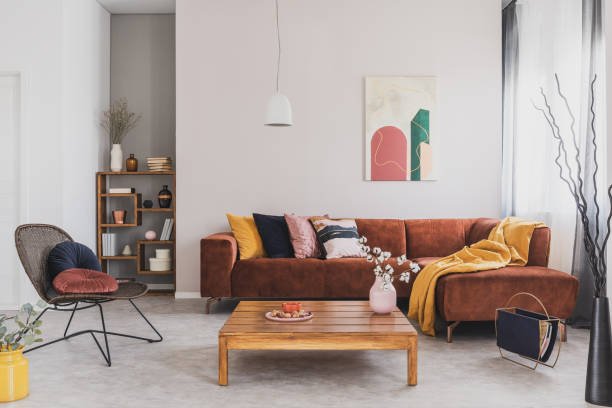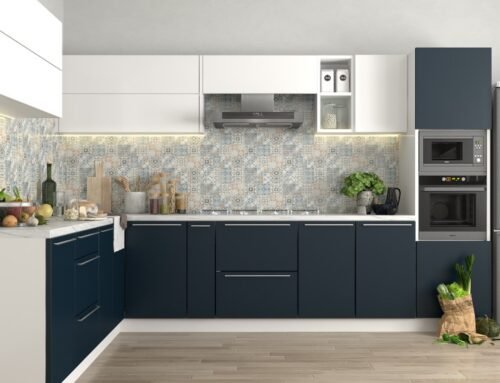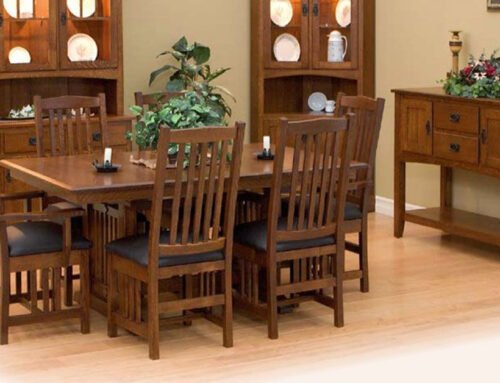There are hundreds of minor decisions that go into designing the ideal room, such as choosing furniture, experimenting with paint samples, and situating art. Even the smallest error, such as displaying artwork overly high or selecting paint with a gloss instead of a matte finish, could have a significant impact on a living room.
Few people understand this better than interior designers, who have witnessed their fair share of stunning and mediocre homes. To understand the most typical home décor errors and avoid them, consider this as your reference manual for creating the most stunning living room possible. Contact us to meet the
Improper Furniture Heights
A single-style blunder might keep a space from attaining its full potential. If everything is the same size or is either too big or too little, your space will look disorganized.
The simple technique is to visualize your area as a cityscape and stuff it with a multitude of heights and dimensions. Check out any city and you’ll see an exciting combination of size and a distinctive combination of fascinating shapes—that’s what you should aim for. Consider visiting our shop, the best furniture shop in Pune, where you can find a plethora of furniture choices with distinctive heights.
Dark Furnishings in Small Rooms
Determining the ideal furnishings for a small living area could be a substantial design challenge. Designers frequently identify one major flaw in tiny rooms: dark furnishings. Many people prefer hefty, massive, and dark furniture items. Although it might appear to be a harmless decision, the dark décor suddenly makes a space feel crowded and burdensome.
Whenever it comes to small apartment living, lightweight materials and finishes that lighten the space are the way to go. Pick large panels or curtains made of linen or lightweight material in a light-reflecting color scheme. If you can’t resist a splash of color, go for it—as long as the majority of the area stays neutral. You can determine your ideal furniture choice at our shop, the Best furniture shop in Baner, with a multitude of choices.
Picking Inappropriate Carpet Size
Carpets can radically change a room and add a focal point, but determining the proper size for your space could be challenging. A carpet that is at least 8-by-10 feet, if not 9-by-12 feet, is usually always required for living rooms. Have you considered a 4-by-6? Don’t. It is fine next to a bed, in the kitchen, or the doorway, but a 4-by-6-foot carpet will almost certainly not suit your living room. As a general guideline, a rug should be large enough to accommodate at least two chair or sofa legs.
Hanging Art at the Incorrect Position!
Finding the ideal piece of artwork for your space is just half the effort. It’s a mistake to be overly concerned with showcasing the positioning of your artwork. Just because you paid for artwork doesn’t mean it would look great over a sideboard in the hallway with a light and a stack of books in front of it. Place artwork in an unusual, subtle area and adhere to this hanging tip: eye-level or so is a nice starting point, and always hang on the lower side of that.
Excessive Use of Design Trends
The most important guideline for developing a really distinctive room is to avoid trends. People commonly make the mistake of becoming insecure. Instead of sitting down and asking, “What do I really love?” they look around them and focus on what everyone else is suggesting.
Make your room feel special. Consider asking yourself these questions: “What does this space mean to me and how it should serve my purpose to live? What are my favorite colors and textures, and how do I want to feel when I come back home? Where should my workspace be so that I can comfortably write my essay for me and study?” Withdraw from trends and center your design choices on your unique interests to design a space you would really like to live in for years.
Lacking Multiple Light Sources
While lighting considerations may appear to be a necessary component of the design process, they are constantly overlooked. The importance of lighting in any area cannot be underestimated. When light shines down from above, it could be unattractive and harsh. While overhead lighting might appear to be the most logical choice, the best rooms include a variety of light sources to create different ambiances. Your lighting should be layered. Make use of dimmers and lighting that comes from several sources at varying heights, such as floor lights and table lamps. Also, always use soft white lights. Harsh fluorescent or white lighting might make a room feel cold and unwelcoming. Warm lighting not only creates the tone but also makes a space feel personal and luminous.
Not Measuring the Space
If you make décor decisions on a whim, you could be making a major mistake. Gather the measurements of each element before making a purchase to create a plan. Relying on the eye to measure a room is one of the most typical interior design errors. Instead of buying furniture because it’s your favorite, think about the total volume of the area. Take measurements of every single corner. Carefully map out your area before investing in décor.






